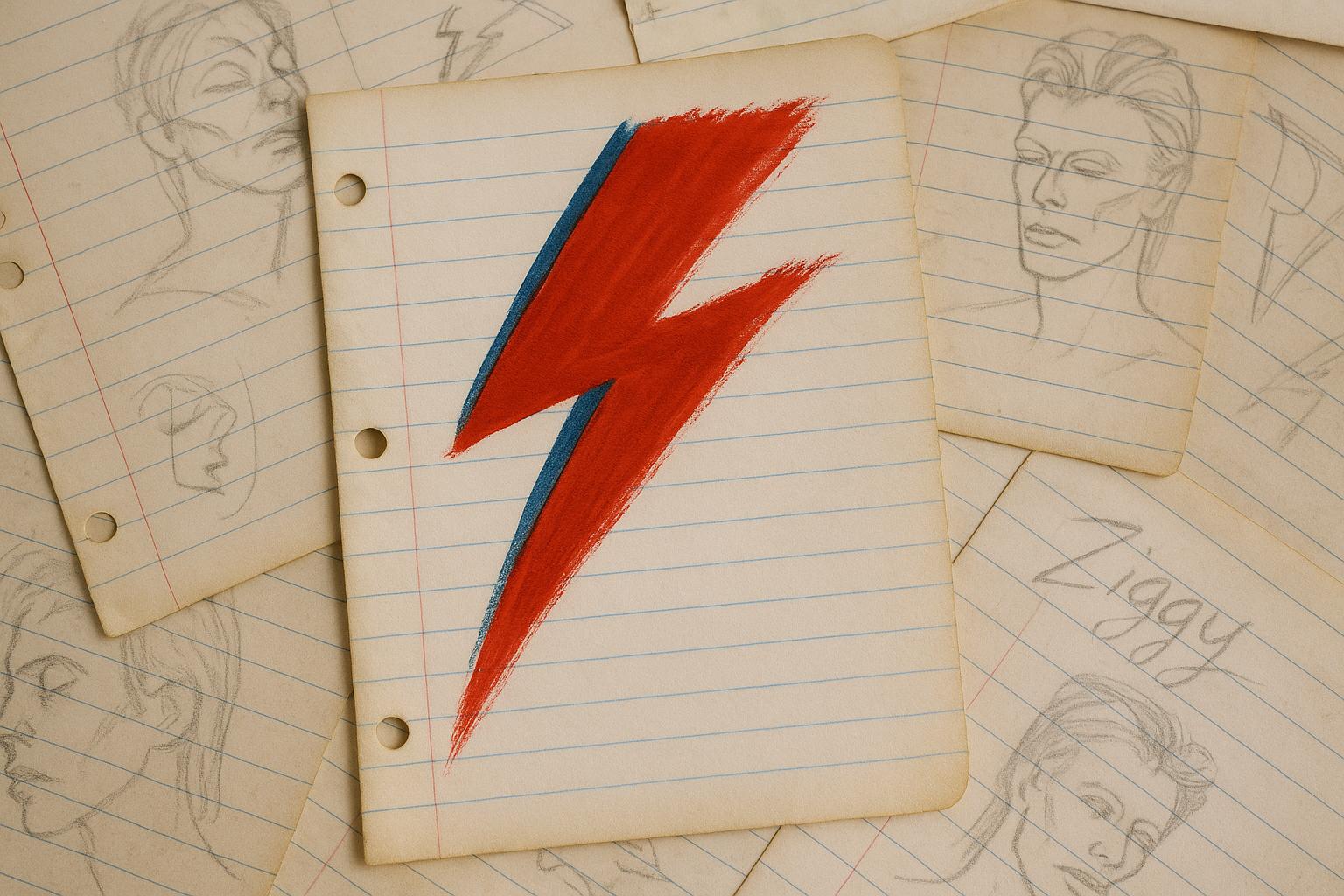David Bowie's immense influence as an artist extends beyond his music into his pioneering visual and creative expressions, a fact vividly illustrated by the extensive archive of around 90,000 personal items from his career. Among these, a particularly captivating piece is a 1969 childlike pencil sketch revealing Bowie's early ideas for the album cover of "Space Oddity," one of his landmark works that introduced the iconic astronaut character Major Tom, whom Bowie revealed bore the surname Hough. This sketch, alongside many others, reflects Bowie’s deep fascination with science fiction and futurism, themes that permeated his work and helped define his boundary-pushing artistry.
The importance of Bowie’s visual creativity is further exemplified by his self-portrait lithograph from 1988, painted during a holiday on Mustique. This introspective image presents Bowie as a contemplative figure, highlighting the serious and often troubled mind behind the stage persona. As a former art student, Bowie’s lifelong dedication to drawing and painting informed much of his artistic output, with many pieces in the archive, including his artist’s palette and paints, underscoring this lesser-known but integral part of his creativity.
Bowie’s flair for fashion was crucial in constructing his ever-evolving alter egos. The archive holds the asymmetric catsuit designed by Kansai Yamamoto for the Ziggy Stardust era, a character now iconic for its androgyny and theatricality. Complemented by bangles and striking makeup inspired by Japanese Kabuki theatre, Bowie’s flamboyant stage persona broke new ground in gender expression and visual spectacle, influencing countless artists who followed. The Aladdin Sane jacket, crafted by Freddie Burretti in 1973, and the sharply stylish suit from the 1983 "Serious Moonlight Tour," designed by Peter Hall, further illustrate how Bowie meticulously shaped his image, collaborating with designers like Alexander McQueen and drawing from varied cultural references to create his unparalleled stage presence.
Innovation was a hallmark of Bowie’s creative process. Notably, his use of the cut-up technique—borrowed from Beat writer William Burroughs—for the "Blackout" lyrics from his 1977 Heroés album exemplifies his willingness to experiment with new methods. This approach, which involved cutting and rearranging text to produce unexpected combinations, was one of many ways Bowie embraced trial, error, and unconventional ideas to fuel his artistry.
Among the archive’s treasures are sketches related to the uncompleted "Diamond Dogs" film project, reflecting Bowie’s ceaseless pursuit of new ideas and ambitious undertakings, some realised and others abandoned. These unfinished projects reveal a creative mind that thrived on exploration, with an ongoing dialogue between success and experimentation that Bowie hoped would inspire future generations.
The visual identity of the "Space Oddity" album itself has been widely recognised and celebrated. The original 1969 cover, photographed by Vernon Dewhurst and featuring an optical art design by Victor Vasarely, remains striking for its modern and innovative aesthetic. This design has been honoured in various ways, including a limited edition multi-colour vinyl commemorating the album's 50th anniversary, crafted by British designer Paul Smith. The album’s unique cover art, now part of collections such as the Victoria and Albert Museum, underscores how Bowie and his collaborators integrated contemporary art influences into his musical projects, deepening the immersive experience of his work.
The archive not only sheds light on Bowie’s artistic journeys but also invites reflection on how visual art, fashion, music, and performance were intertwined in his legacy. From the detailed sketches of early characters to the glamorous suits and iconic costumes, these items chronicle a visionary artist whose creative spirit transcended the conventional boundaries of his era.
📌 Reference Map:
- Paragraph 1 – [1], [2]
- Paragraph 2 – [1]
- Paragraph 3 – [1]
- Paragraph 4 – [1]
- Paragraph 5 – [1]
- Paragraph 6 – [1], [3], [4], [5], [6]
Source: Noah Wire Services
